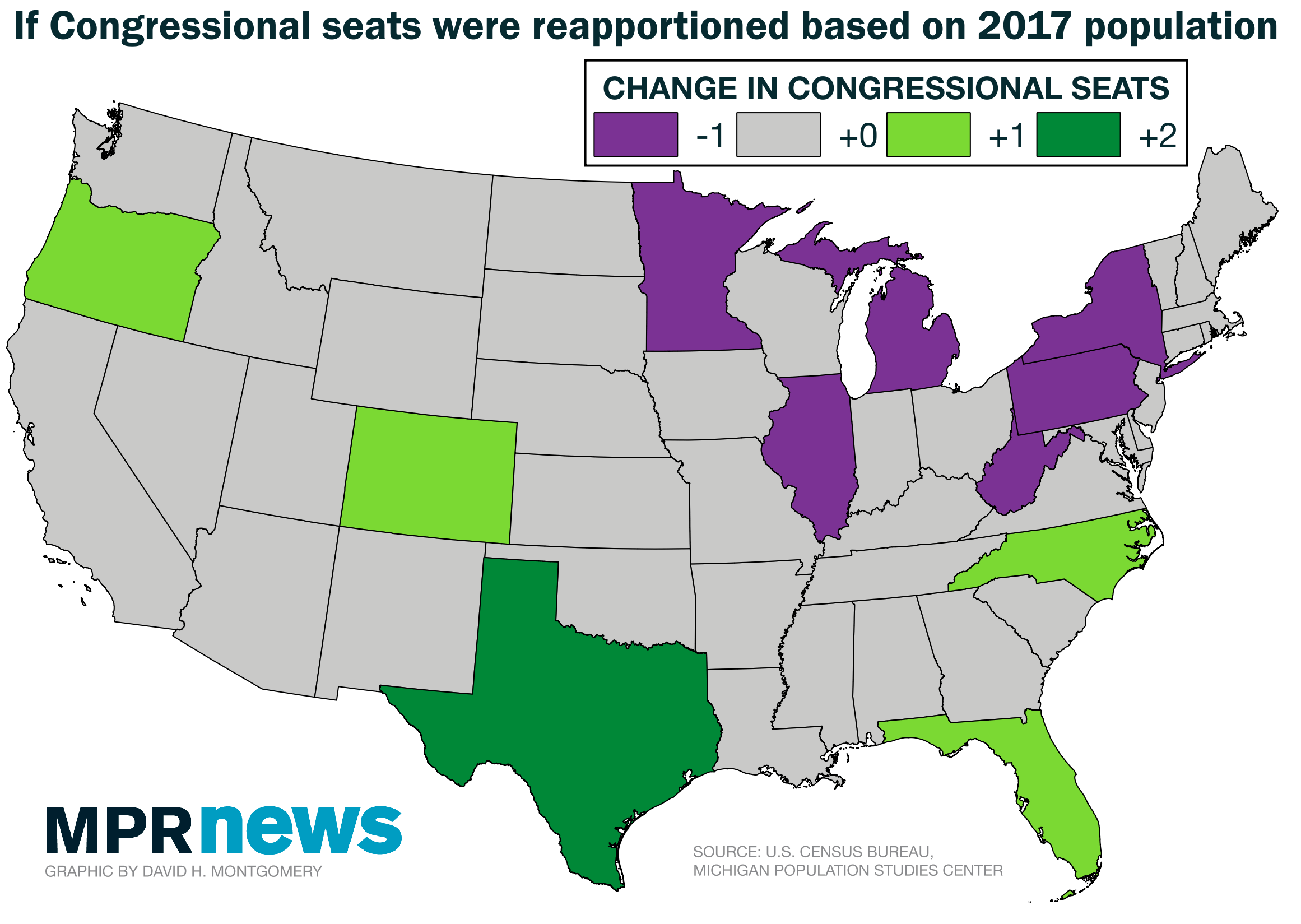Minnesota is at serious risk of losing seat in Congress

[image]
New population estimates released Wednesday show Minnesota is in serious trouble of losing a U.S. House seat and would have to leapfrog other states to keep its current eight.
The 2017 estimates from the U.S. Census Bureau forecast that Minnesota is about 30,500 people shy of retaining its current complement in Congress based on the population shifts in other parts of the country. The once-a-decade reapportionment won't happen until after the official American head count done in 2020, so nothing is certain.
But Minnesota would have to catch several breaks to keep from losing ground. Two states also projected to lose seats -- New York and West Virginia -- were closer to keeping their current delegations intact. Three states that did wind up above the cut line -- Alabama, Colorado and Rhode Island -- did so narrowly.
Create a More Connected Minnesota
MPR News is your trusted resource for the news you need. With your support, MPR News brings accessible, courageous journalism and authentic conversation to everyone - free of paywalls and barriers. Your gift makes a difference.
So there are enough moving parts where Minnesota could still eke out its eight when the final figures come out following the exhaustive 2020 census. A lot is riding on the amount of effort state and local governments put into ensuring the federal count captures their populations as accurately as possible.
Minnesota's 2017 population was pegged at 5,576,606, up from 5,457,173 in 2010. The growth percentage was just shy of the national average so State Demographer Susan Brower isn't ready to concede the loss of a seat.
"It's going to be hard but I don't think it's impossible," she said. "I think it's definitely in reach."
Minnesota has had eight seats in Congress since the 1960s, when it lost one. It had lost another a few decades before that.
Redrawn political maps would be effective for the 2022 election cycle.
Under an analysis using a calculator from the University of Michigan's Population Studies Research Center, the current population estimates would have the following effect on representation in the 435-seat Congress.
Gain seats:
Colorado +1
Florida +1
North Carolina +1
Oregon +1
Texas +2
Lose seats:
Illinois -1
Michigan -1
Minnesota -1
New York -1
Pennsylvania -1
West Virginia -1
(h/t @dataandinfo at American Public Media's APM Research Lab)